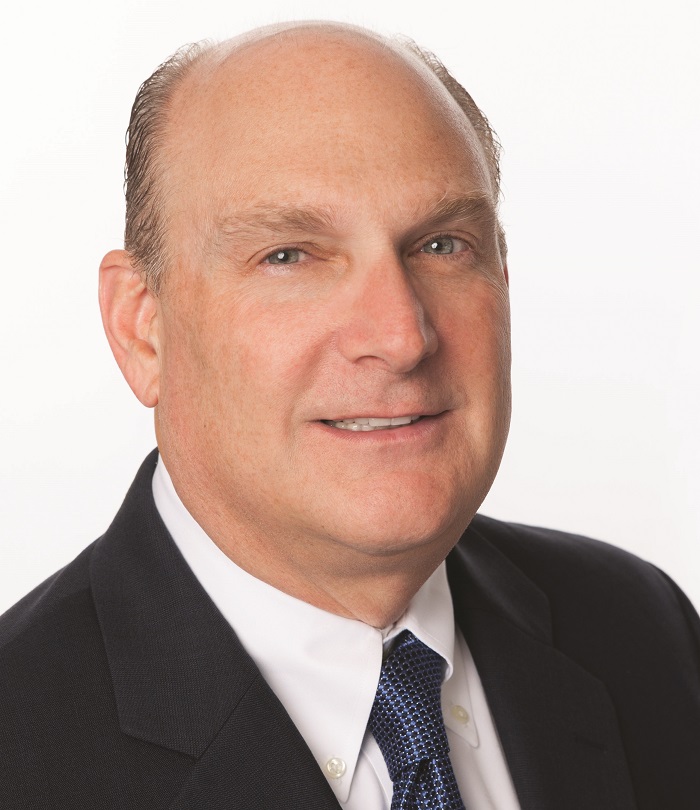Industry expects movement on drug pricing and access during 2019, but what other trends and events are we likely to see? We asked experts in a range of pharma-adjacent businesses for their predictions, hunches, and informed guesses.
Digital health will continue its surge
Larry Mickelberg
Managing director, Deloitte Digital
Enabled by personalized tech, pharma and medical device companies will soon be able to deliver tailored treatments to individuals, backed by real-time service and support. As we enter 2019, marketers are planting the seeds for this augmented age of healthcare with ecosystems that can intelligently respond to needs through sensing with data analytics, agile creative and automated platforms working in concert to deliver resonant content, and personalized experiences to be distributed widely across the health journey.

For marketers, some of the essential componentry is already in customers’ homes. Darlings of the holiday gift season, such as voice activated speakers and connected TVs, are just the forward guard. There’s more to come, such as smart appliances, connected health devices, and AR and VR displays, which will present advertisers with new ways to identify and reach audiences.
Consider this scenario: Current smart homes allow us to remotely adjust the thermostat, set alarms, and turn lights on and off. Cycle that forward to a connected bathroom where the mirror and other tech-enabled appliances process, detect, and analyze health info. Highly attuned sensors embedded in a bathroom mirror scan body temperature and blood pressure, or track skin health and detect anomalies by comparing to a person’s historic biometric data. Maybe this smart mirror even displays a skincare tutorial video or a cold and flu forecast, along with a reminder to refill a prescription and a coupon for your digital wallet.
We will see the beginning of this shift in 2019 with the pulling back of traditional and TV budgets and growth in digital channels to encompassing nearly 50% of spend, with dynamic decision-making, pattern recognition, and machine learning optimizing it all.
An October 2018 Deloitte survey found 82% of early AI adopters are ramping up investments and cite positive ROI. And for good reason — AI presents a fresh opportunity for marketers to use real-time insights to inform their work, with help from data scientists to understand the insights generated by machines. Voice is similarly going to become an important node, as digital agents will become more clinically validated. This will enable more automated self-help, coaching, and condition management, via conversational interfaces across devices and screens.
Bringing it all together will be an increased focus on creative agility. Bringing human-centered design and agile creative development will provide a depth of understanding and empathy that make marketing more relatable and authentic and ensure value is delivered through every brand touchpoint. We foresee the increasing use of predictive tech and contextual targeting to develop content to be distributed via programmatic tech to customers wherever they are.
Pharma will have its Cambridge Analytica moment
Fabio Gratton
Founder and chief alchemist, Alchemy Factory
It seems a day doesn’t pass without the sighting of an ominous headline about a recently discovered data breach from a company maintaining hundreds of millions of consumer records. Collectively, the billions of records stolen through the hacks of Equifax; Facebook; Orbitz; Saks Fifth Avenue; Panera; Yahoo; Under Armour; and Marriott cover the identities of a majority of all U.S. adults.

Ironically, the biggest data breach story of the year, perpetrated by Cambridge Analytica, was actually not a data breach.
The method used to collect what is believed to be more than 50 million Facebook user profiles was legal and involved a widely-known and frequently exploited feature that Facebook app developers, until recently, could leverage. The feature enabled their apps to capture users’ interests and social graphs and those of their friends.
For the most part, this data was used by developers for data mining and ad retargeting. What made this particular incident so egregious is how this feature was exploited through a survey app to collect user data and build unique psychographic voter profiles.
Although Facebook apps can no longer collect this level of data, the ability for any website to collect information about you and your search, browsing, or buying behavior is still very much alive.
In fact, pharma advertisers — and their media partners —rely almost exclusively on the ability to track user behavior in this fashion,thus enabling them to retarget people with relevant ads based on their online activities, such as keywords they’ve typed into Google, articles they’ve read on WebMD, and items they’ve purchased on CVS’ online pharmacy.
But that’s not all. Once they’ve collected sufficient info about a user, companies can cross-reference the supposed anonymized user data with other readily-available data sources to identify exactly who someone is, thus de-identifying data that was supposed to only be used in aggregate.
So what happens when pharma has its Cambridge Analytica moment? Unlike a credit card, which can be canceled or replaced, what gets revealed about someone’s health status is a bell that cannot be unrung. Should there ever be a WikiLeaks-type event, where millions of people’s personal health records are made publicly available for the world to see, how will we react? I predict that in 2019 we will find out.
Point of care will come out of the dark
Matt McNally
CEO, Outcome Health
How did you feel the last time you watched TV? What was on your mind the last time you scrolled through your Instagram feed? Odds are you cannot recall.
However, think back to your last doctor’s visit or time in the hospital. Whether you were anxious or scared, your feelings are much more vivid and hard to forget because in an instant, lives can be forever changed.

From the joyful anticipation of expecting a child to the devastating news of terminal diagnosis, we have all been there — and these moments are not diluted by other noise and clutter.
A powerful thing happens when we combine the emotional quotient with the marketing potential of POC. There is no channel more targeted or platform more relevant. It is the final touchpoint for communication at a time when it matters the most.
In 2019, POC as a channel will graduate and take center stage, specifically in three key areas: tracking, experience, and spend. New players and more rigorous tracking will emerge. Simply put, POC will come out of the dark and into a bright new light.
POC quickly evolved from cover wraps and posters to digital devices spanning hundreds of thousands of provider offices across the U.S., and this proliferation of digital tech into the space created more potential. However, the rapid growth didn’t account for traditional auditing and reporting practices that other channels require. Agencies, publishers, and manufacturers began advocating for more rigorous tracking.
The infusion of digital tech into the POC experience was a game changer for both patients and HCPs. Static posters became 3-D anatomical models a patient and their doctor can interact with. This year will see diverse content and new tech at the POC, both fueled by untapped data sets to further enhance the experience.
Unlike many other channels — specifically digital ones — POC inventory is finite. Every POC organization has a set number of offices and systems in its network, and it’s not an easy task to quickly onboard new offices to create more ad space. Networks can’t simply add more pages of breast cancer content to create more ad space. Therefore, inventory is premium, and there’s room for multiple POC players on a brand’s marketing plan. This,coupled with the changing profile of the pharma pipeline from primary care to specialty providers, will make POC an even more valuable marketing channel.
Changes for tech, pre-existing conditions, employer healthcare costs
Amit Phull, M.D.
VP of strategy and insights, Doximity
Tech will extend its healthcare reach: In 2018, we saw more companies move into the healthcare sector, and these mergers may change the way prescriptions and eldercare services are delivered. Amazon is already revving up for the expansion of PillPack, with a new prescribing license in Washington state and pending licenses in Indiana and New Mexico.

In September, Apple unveiled the Apple Watch Series 4 with the new capability to screen heart rhythms and send a notification if it detects an abnormal heartbeat that may appear to be atrial fibrillation.
Because AFib, which affects between 2.7 million and 6.1 million Americans, can lead to blood clots, strokes, and other complications, this wearable has the capability to help save lives. It is also the first consumer device to receive FDA clearance for ECG monitoring. The extent of data we can collect from wearables is going to increase substantially, allowing patients to be monitored in real time.
The future of pre-existing conditions will remain murky: Healthcare was front and center in the 2018 midterm elections, topping the economy as the biggest issue among voters. With Democrats winning the House, Affordable Care Act repeal seems to be dead for at least another two years. Yet last year, a coalition of 20 states — including nine of the 11 states with the highest rates of pre-existing conditions — filed a lawsuit alleging Obamacare is unconstitutional.
Whether the ACA safety net for pre-existing conditions goes away as a result of this lawsuit or via future legislation, there exists a need for new approaches to care for patients with these ailments. The care team model will need to evolve to accommodate the reality that although people are living longer, they are often in poorer health.
Employers will address their healthcare costs: In an effort to control the rising costs of their health benefit programs, many large companies are offering employees onsite health clinics and wellness programs. These clinics are designed to save money and time by increasing employee attendance at work, improving patient care, and emphasizing preventative health. A Mercer survey found one-third of U.S. employers with 5,000 or more employees offered general medical work site clinics in 2017, up from 24% in 2012.
To that end, Apple has launched AC Wellness, a subsidiary that provides onsite wellness services to employees and families. By opening two health clinics in Santa Clara, California, and one at its Apple Park HQ, the company plans to go beyond offering traditional health services. Over the course of 2019, we can expect to see more models such as this that deliver medicine in a personalized way.
Digital and personalized care revolutions will continue
Kyle Amelung
Senior manager, Express Scripts
While the healthcare industry has lagged behind others in offering convenient, connected customer service, it is making strides with meaningful changes that improve patient outcomes. Expectations for more patient-centric care will continue to rise.
Digital solutions, such as electronic prior authorizations, clinical direct messaging, and real-time prescription benefit information will become the norm, not the exception.

Greater adoption of this tech will be critical as specialty drug spend is estimated to increase close to 50% in the next two years. These new, high-cost therapies require plans to better manage appropriate use via prior authorization.
Patients are also looking for more ways to take the driver’s seat in their own care. Personalized digital devices allow patients with chronic conditions, such as diabetes and hypertension, to better manage their nutrition, stress, and medication adherence. Putting the right tools in the hands of patients will improve clinical engagement, resulting in better care experiences, better health outcomes, and lower costs.
Life sciences companies — and their commercial models — will pivot
Akash Patel
Managing director, Accenture LifeSciences
Successive waves of disruption are reshaping healthcare. And like other asset-heavy industries, the life sciences sector is heavily exposed to compressive disruption that slowly erodes growth, profitability, and value. At the same time, incumbents are facing fierce competition from new players. Everyone wants a bigger share of the healthcare value chain — with many intent on changing it.

Some of the big industry players have realized that to stay competitive and profitable, they need to evolve from selling products at volume to delivering value through better patient outcomes — a pivot to the patient. To pivot effectively, life sciences companies must also fundamentally shift their commercial models.
Further alignment of commercial models will need to evolve to effectively address changing market dynamics, especially as healthcare continues to be further consumerized.
Life sciences companies must know precisely what is driving patient, HCP, and payer engagement and what levers to pull to improve engagement outcomes and drive growth.
New commercial strategies should be grounded in a common foundation but executed differentially based on market and customer needs. This will require more adaptability and agility in how commercial organizations operate today and more movement toward incenting both traditional and nontraditional levers to achieve growth.
It will be significant to create value across all constituents: patients, ecosystem, and pharma.
Organizations must see people as much more than a product consumer — strengthening patient outcomes by delivering experiences beyond the pill. They must also shape and tailor experiences that matter across all customer personas, designing and deploying relevant campaigns and digital content that are fluid and adapt to expectation changes.
Companies need to actively participate and shape the external ecosystem by considering new partnership models and approaching nontraditional players to tap new value pools for business growth. They need to lead with evidence — to require a data-led approach to all internal and external processes, but move beyond current playbooks and currencies.
The industry has to establish a new molecular makeup of brand “teams,” transforming into a living organization with methods for predicting and responding to evolving conditions, and employing learning techniques such as war-gaming for constant adaptation and reshaping of marketing strategy.
They should reward and incentivize their marketers to run a brand as a startup — to identify new value pools and employ novel strategies to realize impact.
Access, opioids will top priority list for PBMs
Jonathan Gavras, M.D.
SVP and chief medical officer, Prime Therapeutics
Providing access to safe, effective and affordable medications will continue to be a priority for pharmacy benefit managers in 2019. In recent years, we’ve seen an acceleration of FDA drug approvals — a record 46 novel drug approvals in 2017, and more than 50 in 2018.
The FDA has even fast-tracked approval of some orphan and oncology drugs that only have Phase I or II clinical data available. The number of approved biosimilars is also increasing, but many have not yet launched to drive anticipated savings.

Also in the specialty drug market, new, personalized treatments such as CAR-T and gene therapy will continue to come to market with very high price tags, in part because they cannot be self-administered. These infusions are managed as drugs, but they’re really treatments that process on the medical benefit.
Another issue that will continue to be a focus is curbing opioid misuse. In 2010, Prime Therapeutics began identifying individuals at risk for opioid abuse using a controlled substance scoring system. This score helps feed a progressively intensive set of clinical programs, including personalized case management, while a fraud and waste system helps identify misuse and abuse.
Managing medicines today calls for a fresh approach, where all members of the healthcare delivery system work together to look holistically at individuals, and create comprehensive care solutions aimed at improving their health outcomes, while keeping their total cost of care in check.
Industry will see collaborative and innovative pricing strategies
Jason Dohm
VP, clinical account management, Express Scripts
The high cost of prescription drugs is a topic that’s not new – and it’s not going away. The current state of drug pricing is simply not sustainable.
What’s new is the way in which we’re creating solutions to better manage these costs and to improve patient access to medications.

With the administration’s drug pricing blueprint and its proposed International Pricing Index, stakeholders are challenged to find solutions, leveraging a variety of strategies. Our new Flex Formulary provides an option for plan sponsors to cover lower list price products, such as new authorized alternatives that drugmakers are bringing to the market, and reduce reliance on rebated brand products.
From the January 01, 2019 Issue of MM+M - Medical Marketing and Media







